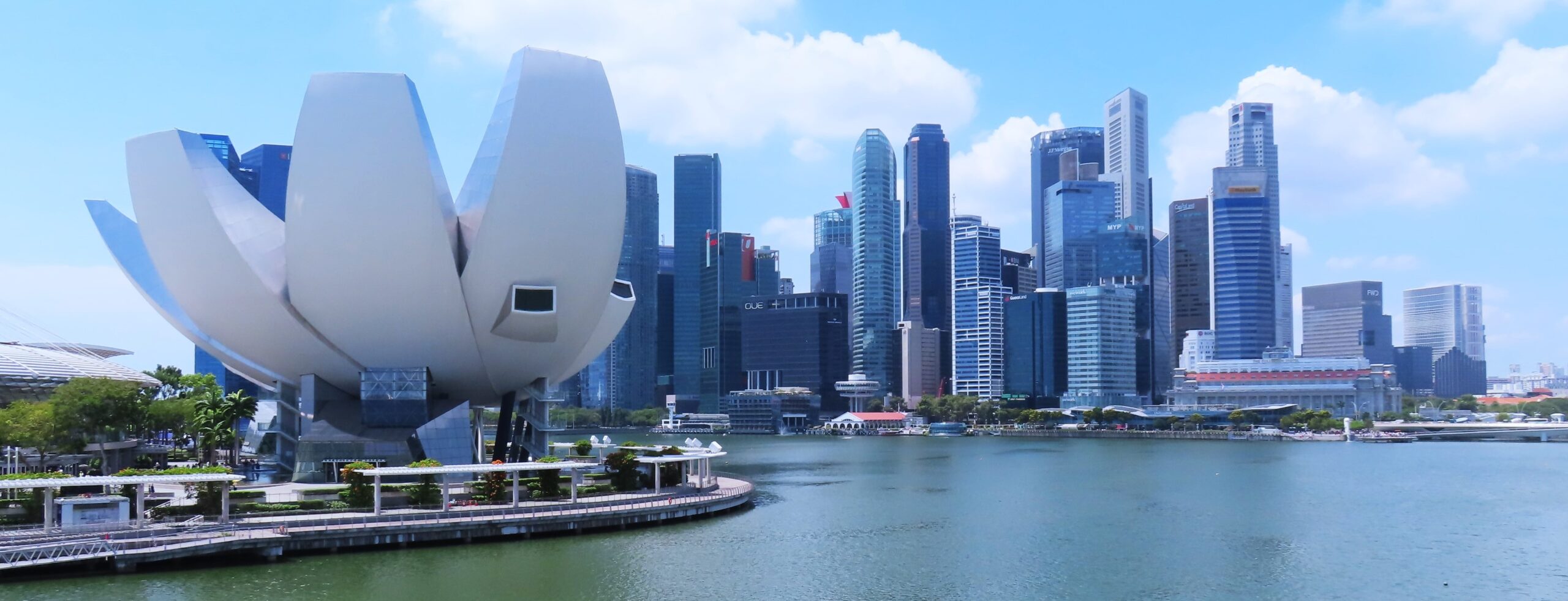You might have an image of Singapore as a jungle of skyscrapers: busy, corporate and soulless. But just a few hours in Singapore will show you why it is a UNESCO Creative City of Design. The sheer number of unique buildings, and the greenery that forms an integral part of their design, creates a feeling of innovation and suggests a focus on humans and well-being.
Nature informs design
Something I loved about Singapore’s design is that it strikes a perfect balance between nature and man-made structures. In fact, the designs of many of its newer structures are overtly informed by nature.
The ArtScience Museum is a good example of this. It is shaped like a lotus with blunt ends to its petals. At its base is a pond filled with lily pads, some sprouting their own lotus flowers. The Museum’s shape is aesthetically pleasing and explicitly appeals to the innate human tendency to gravitate towards nature.

Another example is the Supertrees in the Gardens by the Bay. Leaving aside that the Gardens themselves are a huge natural space with an abundance of different types of plant, the Supertrees are designed as vertical gardens, with foliage all the way up their towering trunks. At the top, the branches are actually lights. With the Supertrees, Singapore strikes home with making a nature-inspired man-made structure an icon of Singapore’s skyline.
There’s no denying that Singapore is a busy place – it is one of the most densely populated places on the planet and has the infrastructure to match. So it’s even more remarkable that in the face of this you never feel that the natural world has been lost to the man-made.
Singapore’s cultural heritage is built into its designs
Singapore is a blend of cultures, mainly Chinese, Indian, Malaysian and British. This is visually evident in Singapore’s design.
Some of Singapore’s architecture is typically East Asian, corners turned up on their decorated rooves. Neon lights are also a frequent sight, especially down Boat Quay on the waterfront.
But the British colonial influence is equally evident in Singapore’s architecture. In particular, the Raffles Hotel and the Fullerton Hotel are white buildings with neat columns. Singapore Cricket Club is a hallmark of British cultural influence in Singapore.
Everywhere you look, Singapore’s cultural makeup is visually evident.

Even the skyscrapers are iconic
Singapore is an important corporate hub on the global stage, with many companies having their Asian head offices here. Singapore’s corporate skyscrapers therefore comprise a major part of its identity, a visual representation of its corporate and personal wealth.

Unlike many European cities, Singapore doesn’t just have a few skyscrapers confined to one district. Singapore’s skyscrapers are everywhere, gleaming in the sunlight, many of them looking brand new.
Yet somehow Singapore’s high density of skyscrapers does not cause the place to feel claustrophobic. Perhaps this is because of the heavy focus on nature in the designs. Even the skyscrapers that have less remarkable designs have plants wherever the design allows. This is subtle and clever – the tranquil greenery offsets the churning corporate machinery.
All of Singapore’s design has the human experience in mind
Ultimately, it felt to me as though Singapore’s man-made areas and structures had been created with the human experience firmly in mind.
There is iconic and world-class architecture all over Singapore, a visual representation of how wealth creates wealth. But the way Singapore distinguishes itself on the global stage on this front is that this visual representation of wealth is not ostentatious. These buildings are not there for the sake of displaying wealth. By incorporating nature at every possible opportunity, Singapore has truly been designed for people to enjoy.
Singapore proves that spending money on good public services and spaces is an investment. It’s not just a concrete jungle focused on money. It’s authentic and it’s organically shaped for people.
